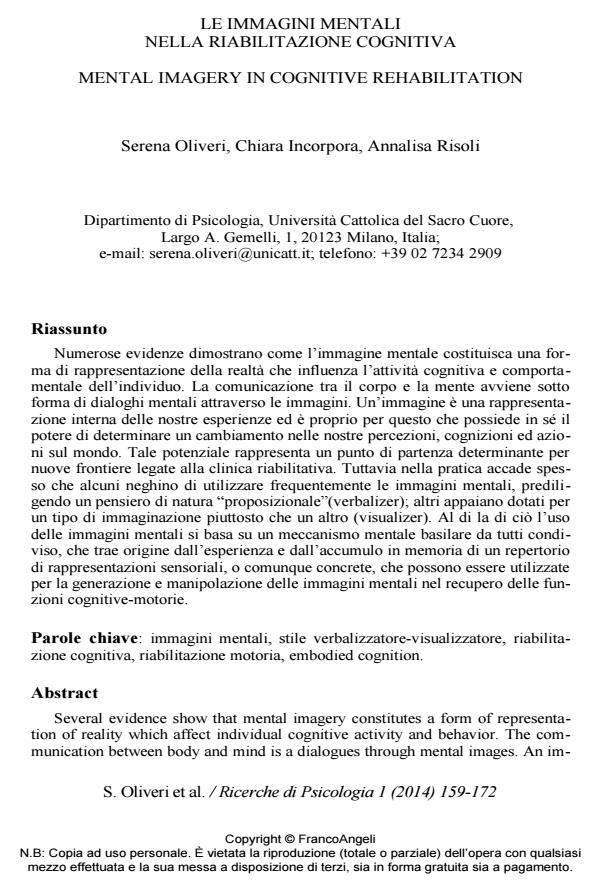Le immagini mentali nella riabilitazione cognitiva
Journal title RICERCHE DI PSICOLOGIA
Author/s Serena Oliveri, Chiara Incorpora, Annalisa Risoli
Publishing Year 2014 Issue 2014/1
Language Italian Pages 14 P. 159-172 File size 170 KB
DOI 10.3280/RIP2014-001009
DOI is like a bar code for intellectual property: to have more infomation
click here
Below, you can see the article first page
If you want to buy this article in PDF format, you can do it, following the instructions to buy download credits

FrancoAngeli is member of Publishers International Linking Association, Inc (PILA), a not-for-profit association which run the CrossRef service enabling links to and from online scholarly content.
Several evidence show that mental imagery constitutes a form of representation of reality which affect individual cognitive activity and behavior. The communication between body and mind is a dialogues through mental images. An image is an internal representation of our experiences and for this reason possesses itself the power to change our perceptions, cognitions and actions in the environment. This potential represents a starting point for determining the new frontiers related to clinical rehabilitation. However, in practice it often happens that some deny to use frequently mental imagery, preferring a "propositional" thought (Verbalizer); others prefer imagination (visualizer). Beyond this considerations, the use of mental imagery is based on a basic mental mechanism shared by everybody. It’s origins are in the experience and the sensory-motor representations store in memory, that can be used for the generation and manipulation of mental images in cognitive and motor rehabilitation.
Keywords: Mental imagery, verbalizer-visualizer cognitive style, cognitive rehabilitation, motor rehabilitation, embodied cognition.
Serena Oliveri, Chiara Incorpora, Annalisa Risoli, Le immagini mentali nella riabilitazione cognitiva in "RICERCHE DI PSICOLOGIA " 1/2014, pp 159-172, DOI: 10.3280/RIP2014-001009